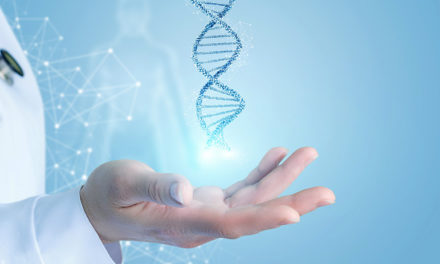Foods for diabetes
When one has diabetes, there is no need to feel deprived. It is possible to learn how to achieve balance and make meals that are healthy, while also still eating the foods that you enjoy. Blood sugar levels are usually raised by starchy and sugary carbohydrates, but these foods can still be included in your meals when part of a meal plan that is balanced. One of the most important things to take note of as a diabetes patient is the total carbohydrates present in any meal. There are a lot of varying factors that determine carbohydrate needs, such as medications and activity level.
A balanced diet for diabetes patients should:
-
- Include vegetables and fruits.
- Include lean protein.
- Avoid trans fats.
- Reduce foods that have added sugar.
Best and worst diabetes foods
There is nothing as important as your food choices when you have diabetes. There are foods that generally promote better health outcomes than others, but there is no food that is totally prohibited. Some of the foods that are often tagged as the worst can serve well as occassional treats in small quantities. They are, however, not the best choice nutritionally; which is why the best way for you to keep your diabetes under control is to adhere to the food options that are optimal. It is important that one eats a balanced diet; which is why we will be looking at each class of food and examining the best and worst food options in each.
Starches
Carbs are needed by the body. It is important that the right carbs are chosen.
-
- Best choices: wholegrains like amaranth, millet, quinoa, oatmeal, or brown rice, baked sweet potato and foods that do not have added sugar.
- Worst choices: white flour tortillas that are fried, French fries, white bread, cereals with plenty of added sugar and little wholegrains, and processed grains like white flour and white rice.
Vegetables
Vegetables are very important. They provide little salt or fat, but a lot of fiber and minerals. It is important to remember that corn and potatoes are not vegetables, but carbs.
-
- Best choices: unsalted or low-sodium canned vegetables, greens like arugula, spinach and kale, lightly steamed frozen vegetables, and fresh vegetables that are grilled, roasted, lightly steamed or eaten raw.
- Worst choices: canned vegetables that have plenty of added sodium, sauerkraut and pickle or veggies that are prepared with processed sauces, cheese or butter.
Fruits
Fruits usually provide fiber, minerals, vitamins and carbohydrates. Fruits are generally low in sodium and fat, but they usually contain a lot more carbs than vegetables do.
-
- Best choices: apple sauce without added sugar, preserves or jam that are low in sugar, sugar-free, frozen fruit, canned fruit without any form of added sugar, and fresh fruit.
- Worst choices: fruit juice drinks, fruit drinks and fruit punch, sweetened apple sauce, preserves, jelly and regular jam, fruit rolls that are chewy, and canned fruit with heavy sugar syrup.
Protein
There are a lot of protein choices available including tofu, nuts, eggs, cheese, beans, seafood, turkey, pork, fish, chicken and beef.
-
- Best choices: low-fat dairy, eggs, chicken and any other poultry, seafood and fish, plant-based proteins like tofu, seeds, nuts and beans. If meat is going to be eaten, choose lean cuts. The skin of the poultry should be trimmed off. Even for non-vegans or non-vegetarians, proteins that are plant-based like tofu, nuts, and beans must be included because they contain fiber and nutrients which cannot be found in animal products.
- Worst choices: beans cooked in lard, deep-fried tofu, deep-fried fish, poultry with the skin, regular cheeses, pork bacon, fried meats, and meat cuts with higher fat content like ribs.
Dairy
It is very important that only low-fat dairy is included, and the portion should be kept very small.
-
- Best choices: low-fat or non-fat sour cream, low-fat cottage cheese, low-fat yogurt, skim milk or 1% milk.
- Worst choices: regular half-and-half, regular ice cream, regular sour cream, regular cottage cheese, regular yogurt, and regular and whole milk.
Sweets, fats and oils
It can be hard to resist sweets, fats and oils. It is, however, quite easy to gain weight when eating a lot of these foods, making it a lot harder for you to keep your diabetes under control.
-
- Best choices: plant-based oils like olive oil, grape seed or canola; foods that are sources of omega-3 fatty acids like mackerel, tuna and salmon; natural vegetable fat sources like avocados, seeds and nuts.
- Worst choices: foods that contain trans fats are bad for your heart. Saturated fats have also been shown to raise cholesterol.
Drinks
Drinks can provide you with more fat, salt, sugar and calories than you know. It is important that you read the labels to help you know what you’re drinking.
-
- Best choices: coffee with a sugar substitute and low-fat milk (or black), wine in small amounts, light beer or mixed drinks that are non-fruity, unsweetened tea with a lemon slice, sparkling water, both flavored or unflavored.
- Worst choices: energy drinks, chocolate drinks, flavored coffees, coffee with cream and sugar, sweetened tea, dessert wines, fruity mixed drinks, regular beer and regular sodas.
Generally speaking, there are foods that are best for diabetes patients, and they are mostly foods with no added sugar. They include:
-
- Leafy green vegetables: these are usually packed with many different essential nutrients, minerals and vitamins. They also have a minimal impact on blood sugar levels. Leafy greens like kale and spinach are vital sources of calcium, vitamin A and potassium. Fiber and protein are also provided by these leafy greens. It is believed that vegetables are helpful for diabetes patients as a result of the starch-digesting enzymes and high antioxidant content. Examples of these vegetables include broccoli, bok choy, cabbage, kale, collard greens and spinach. Vegetables can be included with dinners, soups, side dishes and salads. They can also be combined with a lean protein source like tofu or chicken.
- Wholegrains: these usually contain more nutrients and fiber than their white, refined counterparts. It is important that diabetes patients eat diets rich in fiber because this helps in slowing down the digestion process. Slower nutrient absorption helps in keeping the blood sugar levels stable. Wholegrains and wholewheat, unlike rice and white bread, are very low on the glycemic index and therefore have less impact on the patient’s blood sugar level. Some of the wholegrains that can be included are: rye, bulgur, millet, quinoa, buckwheat, wholegrain pasta, wholegrain bread and brown rice.
- Fatty fish: this is a very good, healthful addition to the diet. There are some fish that are rich sources of monounsaturated and polyunsaturated fats, which can go a very long way in improving blood lipid levels and blood sugar control. Examples of these fish are trout, herring, albacore tuna, sardines, mackerel and salmon. There are alternative plant-based sources for these fatty acids, such as seaweeds like spirulina and kelp. Grilled fish, roasted fish or baked fish are better options than fried fish that contains trans and saturated fats. Fatty fish can be prepared alongside vegetables for a healthful lunch or dinner option.
- Beans: these are a very good food choice for diabetes patients. Beans are a source of plant-based protein which can help reduce the intake of carbohydrate by satisfying the appetite. The GI of beans is very low, which makes them a lot better than starchy foods for the regulation of blood sugar. Beans can help with weight loss, and with the regulation of cholesterol and blood pressure. There are a variety of beans including adzuki beans, navy beans, black beans, pinto beans and kidney beans. Beans contain iportant nutrients like magnesium, potassium and iron.
- Walnuts: these are a great addition to any diet. Much like fish, they contain fatty acids that can maintain the heart in a healthy condition. Key nutrients like iron, magnesium, vitamin B-6 and protein are also provided by walnuts. Walnuts can be added to breakfast or even mixed into a salad.
- Citrus fruits: lemons, grapefruits and oranges are known for their anti-diabetic effects. Consuming citrus fruits can be a great way of getting essential minerals and vitamins without the excess carbohydrates from fruit. Potassium, folate and vitamin C are provided in high quantities from citrus fruits.
- Berries: these contain antioxidants, which help prevent oxidative stress. We can link oxidative stress to a number of health conditions like some cancers and heart disease. High oxidative stress in diabetes patients is chronic. Raspberries, strawberries, blackberries and blueberries all contain fiber and antioxidants in high levels. Berries also contain some minerals and vitamins that are important.
- Sweet potatoes: the GI of white potatoes is higher than that of sweet potatoes. This means that sweet potatoes are a better alternative for diabetes patients because the sugar is released more slowly. Sweet potatoes also provide potassium, vitamin C, vitamin A and fiber. They can be enjoyed in a variety of ways: mashed, roasted, boiled or baked. They can also be eaten with salad, vegetables or a lean protein source.
- Probiotic yogurt: this contains probiotics, which are bacteria living in the gut of humans that improve digestion and overall health. They can also help in improving cholesterol levels of people with type 2 diabetes. Probiotic yogurt can also go a very long way in lowering heart disease risk.
There are some foods that are the worst to consume for diabetes patients, and they are mostly foods with a high glycemic index. They include:
-
- Carb-heavy foods: an essential part of our meals are carbohydrates. However, diabetes patients have a lot to gain from reducing their intake of carbohydrate as part of a balanced diet and trying to pair them with a fat source or healthful protein.
- High-GI fruits: almost all fruits have a low GI, but there are a few which have high GI. As a result, these fruits can increase the blood glucose level quickly.
- Trans and saturated fats: unhealthy fats like trans and saturated fats can contribute to making diabetes patients worse. A lot of processed and fried foods like baked goods, chips and fries contain these fats.
- Refined sugar: diabetes patients should try as much as possible to avoid or limit refined sugar. Examples are biscuits, cakes, and both homemade and store-bought sweets.
- Sugary drinks: drinks containing high amounts of sugar like shakes, some coffees and energy drinks can create rapid imbalance in insulin levels.
- Salty foods: blood pressure can be raised by foods with a high salt content.
- Alcohol: when alcohol is consumed in moderation, there should not be any risks for diabetes patients and glucose control should not be affected long-term. Patients using insulin therapies have a higher risk of hypoglycemia linked to the consumption of alcohol.



